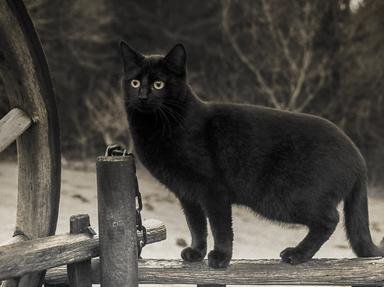Quiz Answer Key and Fun Facts
1. The idea of witches and sorcerers trafficking with the powers of darkness dates back thousands of years. In an ancient Roman legend, Pompey the Great's son, Sextus Pompeius, seeks out a notorious witch named Erichtho to learn the outcome of an upcoming battle through the power of necromancy. What on earth did this involve?
2. In the popular imagination, witches are often depicted as hideous old hags. This is not a new idea. In Slavic folklore, there are tales of an ogress who appears to be a deformed old woman with a long nose who rides through the air in a mortar while wielding a pestle. She is known by what name? (Oddly enough, this is also a nickname of John Wick in the films of the same name.)
3. Mandrake, the root of the mandragora plant, has a spooky reputation! It has long been associated with witchcraft and was said to be used in magic potions. According to ancient legends, one had to be careful when digging it up, as what dangerous thing would happen?
4. Perhaps, the ultimate creature of the night is the vampire. Although legends of blood-sucking supernatural beings go back thousands of years, the idea of a vampire as a human who has risen from the dead is only a few centuries old, and originated in what region's folklore?
5. The Tower of London is associated with many ghost stories, hardly surprising considering how many people have been executed there over the centuries. In 1864, a soldier guarding the Tower fainted after confronting a headless ghost, believed to be what tragic woman?
6. Nineteenth century London was terrorized for over 60 years by a mysterious figure who was said to be able to make prodigious leaps from the street to the rooftops, and to appear out of nowhere to accost people and vanish equally mysteriously. By what name was this enigmatic assailant known?
7. Stories about malevolent creatures invading people's homes and harassing the occupants appear around the world and are often associated with things that "go bump in the night." In traditional English folklore, what is the name of one kind of malevolent household spirit that causes all sorts of mischief from making milk go sour to much more sinister things like abducting children?
8. Stories about headless horseman can be found in many parts of the world. In some versions, he carried his head around, while in others he rides around looking for it. Perhaps the most famous version is "The Legend of Sleepy Hollow" by Washington Irving. However, a headless horseman also appears in what 14th century English poem?
9. During the medieval witch trials, some people were not only accused of being witches but were also accused of being werewolves. Amazingly, some people actually voluntarily confessed to being werewolves! Nowadays, the belief that one can turn oneself into an animal is considered a rare but actual psychiatric disorder, which goes by what name that is the same as the mythical process of becoming a werewolf?
10. A quiz on creepy supernatural creatures would hardly be complete without mentioning zombies, undead corpses reanimated through black magic. Zombies have become ubiquitous in modern pop culture. From which modern country, associated with Voodoo, did the word zombie derive?
Source: Author
agentofchaos
This quiz was reviewed by FunTrivia editor
agony before going online.
Any errors found in FunTrivia content are routinely corrected through our feedback system.
